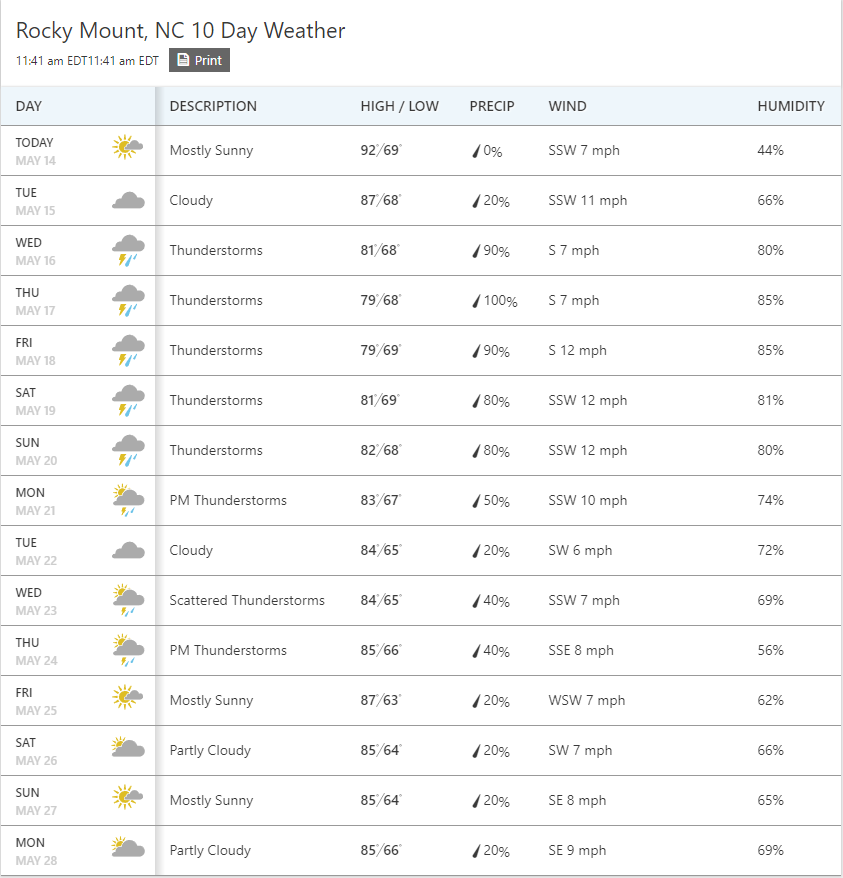Cotton Planting Conditions – May 14, 2018
go.ncsu.edu/readext?527661
en Español / em Português
El inglés es el idioma de control de esta página. En la medida en que haya algún conflicto entre la traducción al inglés y la traducción, el inglés prevalece.
Al hacer clic en el enlace de traducción se activa un servicio de traducción gratuito para convertir la página al español. Al igual que con cualquier traducción por Internet, la conversión no es sensible al contexto y puede que no traduzca el texto en su significado original. NC State Extension no garantiza la exactitud del texto traducido. Por favor, tenga en cuenta que algunas aplicaciones y/o servicios pueden no funcionar como se espera cuando se traducen.
Português
Inglês é o idioma de controle desta página. Na medida que haja algum conflito entre o texto original em Inglês e a tradução, o Inglês prevalece.
Ao clicar no link de tradução, um serviço gratuito de tradução será ativado para converter a página para o Português. Como em qualquer tradução pela internet, a conversão não é sensivel ao contexto e pode não ocorrer a tradução para o significado orginal. O serviço de Extensão da Carolina do Norte (NC State Extension) não garante a exatidão do texto traduzido. Por favor, observe que algumas funções ou serviços podem não funcionar como esperado após a tradução.
English
English is the controlling language of this page. To the extent there is any conflict between the English text and the translation, English controls.
Clicking on the translation link activates a free translation service to convert the page to Spanish. As with any Internet translation, the conversion is not context-sensitive and may not translate the text to its original meaning. NC State Extension does not guarantee the accuracy of the translated text. Please note that some applications and/or services may not function as expected when translated.
Collapse ▲Keith Edmisten, Professor of Crop Science & Soil Sciences and Extension Cotton Specialist
Guy Collins, Extension Associate Professor – Cotton
We won’t post the DD60s this time as temperatures from here on out are predicted to be good for cotton planting. That is the good news. There are many places that are drying out, so the predicted rain is also potentially good news. The catch is that with thunderstorm systems, there is also a likelihood of packing rains. If you have a lot left to plant before next Friday, May 25 (1st insurance cutoff), proceed planting on well-drained ground and hold off on low land that has a tendency to saturate and sour, or soils with a history of crusting. If you don’t have much left to plant and can effectively plant it quickly once this rain passes, it may be worth it to wait. With this forecast, which at times is unreliable, there is a risk either way.
It would be nice to stop planting 3 to 4 days before a packing rain is predicted, unfortunately with the unpredictability of thunderstorms and the need to finish planting this may be difficult for many growers. The chart below from weather.com shows the predicted weather at Rocky Mount from now until May 28. It looks like the intensity of thunderstorms will diminish after the 20th of May. Packing rains can turn otherwise optimal planting conditions into marginal conditions. Refer to Tips for Planting Cotton in Suboptimal Conditions if you need to plant when packing rains are a threat.



